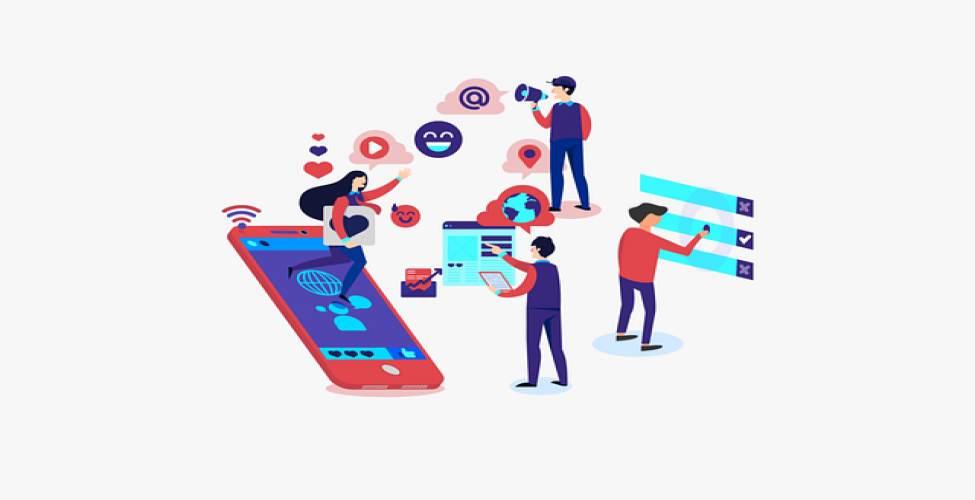How to Write Alt Text for Images Improve Accessibility and SEO with These Simple Tips

Strong 8k brings an ultra-HD IPTV experience to your living room and your pocket.
In the age of digital accessibility, alt text isn’t just a nice-to-have—it’s essential. For anyone managing websites with hundreds or thousands of images, manually creating alt text can be overwhelming. Fortunately, automatic alt text generation tools have emerged to save time and ensure that every image is tagged with descriptive text. In this article, we’ll explore everything from the basics of alt text to advanced automation tools that make the process effortless.
What Is Alt Text?
Alt text, short for “alternative text,” is a brief description embedded in HTML to explain the content of an image. It appears in place of an image if it fails to load and is also accessible to screen readers, making it a crucial feature for visually impaired users.
Why Is Alt Text Important?
Accessibility Benefits
Alt text is key for web accessibility, allowing screen readers to provide meaningful descriptions to visually impaired users. Without alt text, users who rely on assistive technology might miss critical content, leading to a frustrating and exclusionary experience.
SEO Benefits
Search engines can’t "see" images, so they rely on alt text to interpret an image's content. Well-crafted alt text can improve a page’s SEO by helping it rank in search results, particularly in image search.
Challenges of Writing Alt Text Manually
Time-Consuming Nature
For a website with hundreds of images, manually adding alt text to each image is daunting. Each description must be crafted individually, which is impractical for content creators working with large libraries. This is where an automatic text generator can streamline the process, saving time and effort for web developers and content managers.
Consistency Issues
Manually created alt text can vary in tone and detail, especially across teams. This inconsistency can affect both accessibility and SEO, leading to mixed user experiences.
How Automatic Alt Text Generation Works
Automatic alt text generation relies on artificial intelligence (AI) and machine learning algorithms. These technologies analyze an image, identify its key components, and generate a description based on what they detect. Advanced tools can distinguish between objects, people, and activities, creating relevant and descriptive text.
Best AI Image Alt Text Plugin for WordPress: AI Image Alt Text Generator for WP
If you’re a WordPress user looking to streamline the alt text creation process, the AI Image Alt Text Generator for WP is a highly recommended plugin. This tool integrates seamlessly with WordPress, automatically generating descriptive alt text for every image uploaded to your site. Powered by advanced AI, it analyzes each image to create relevant, accessible descriptions, helping improve both SEO and accessibility.
How AI Image Alt Text Generator for WP Works
After installation, the plugin takes over the task of alt text generation, saving time while ensuring consistency across all your images. By automating this process, it eliminates the need to manually craft alt text for each new image, making it an ideal solution for sites with extensive image libraries.
Best Tools for Automatic Alt Text Generation
AI-Powered Tools
Microsoft Azure Cognitive Services: Provides image recognition capabilities that can automatically generate alt text based on the content of an image.
Google Vision AI: Offers powerful image recognition that can describe scenes, detect objects, and even recognize text within images.
CMS Plugins and Integrations
WordPress Plugins (e.g., ImageSEO): These plugins integrate with WordPress sites and use AI to generate alt text automatically as images are uploaded.
Shopify Alt Text Generators: Several Shopify apps can auto-generate alt text, making it easier for e-commerce stores to enhance image accessibility.
How to Set Up Automatic Alt Text in WordPress
Install a Plugin: Look for plugins like ImageSEO or Auto Image Attributes.
Configure Settings: Customize the settings based on your alt text requirements, such as object detection preferences.
Upload Images: Once set up, the plugin will automatically generate alt text as images are added, streamlining the process.
How to Use AI Image Recognition for Alt Text Generation
AI image recognition tools, such as Google Vision AI, can help generate accurate descriptions for complex images. By analyzing patterns, colors, and objects within images, these tools can create alt text that closely resembles human-generated descriptions. Many of these tools have APIs that integrate seamlessly with various content management systems.
Benefits of Using AI for Alt Text Generation
Efficiency
Automated tools can handle vast amounts of images quickly, saving time for web administrators and content creators.
Consistency
AI-driven tools ensure consistent descriptions across an entire website, resulting in a uniform style that’s more accessible and SEO-friendly.
Best Practices for Automatic Alt Text
Keep It Descriptive
While AI can generate alt text, it’s important to review it for accuracy. Descriptions should convey key visual details that add context for the user.
Avoid Redundant Phrases
Phrases like “image of” or “photo of” are unnecessary and can clutter alt text. Most automated tools allow for setting preferences to avoid these redundant words.
Limitations of Automatic Alt Text Generators
Accuracy Concerns
Even the best AI can make mistakes, sometimes misinterpreting objects or missing context that a human would easily recognize.
Contextual Errors
An automated tool might correctly identify an object but miss the broader context. For instance, a picture of a dog sitting by a lake could be described simply as “dog,” omitting the environmental details that add to the image’s meaning.
How to Customize Automated Alt Text for Better Accuracy
One effective approach is to use a hybrid method: allow the AI to generate a description, then review and refine it. This ensures the alt text is as accurate as possible, incorporating any context the AI might have missed.
SEO Tips for Alt Text Optimization
Use Relevant Keywords: Alt text can improve SEO, so include keywords where appropriate, as long as they fit naturally.
Be Specific: Instead of “dog,” use “Golden Retriever sitting by a lake.”
Avoid Keyword Stuffing: Focus on readability and user experience rather than overloading the text with keywords.
Future of Alt Text Automation
AI and machine learning are rapidly advancing, and future tools will likely become even more sophisticated, understanding not just objects but also context, emotions, and nuanced details in images. This could lead to even more accurate and human-like alt text generation.
Conclusion
Alt text is crucial for accessibility and SEO, but manually creating it for every image can be labor-intensive. Thankfully, automatic alt text generation tools are available, making it possible to efficiently add descriptive text to all your images. Whether you’re using AI-powered tools, CMS plugins, or API integrations, you can streamline your workflow while maintaining quality. However, remember to periodically review and adjust automatically generated alt text to ensure accuracy and relevance.
Note: IndiBlogHub features both user-submitted and editorial content. We do not verify third-party contributions. Read our Disclaimer and Privacy Policyfor details.







